‘This is a total inside secret!’ – Rihanna’s florist shares his top flower-arranging tips for Valentine's Day
How you arrange flowers is a big part of their beauty, here is how to get it right

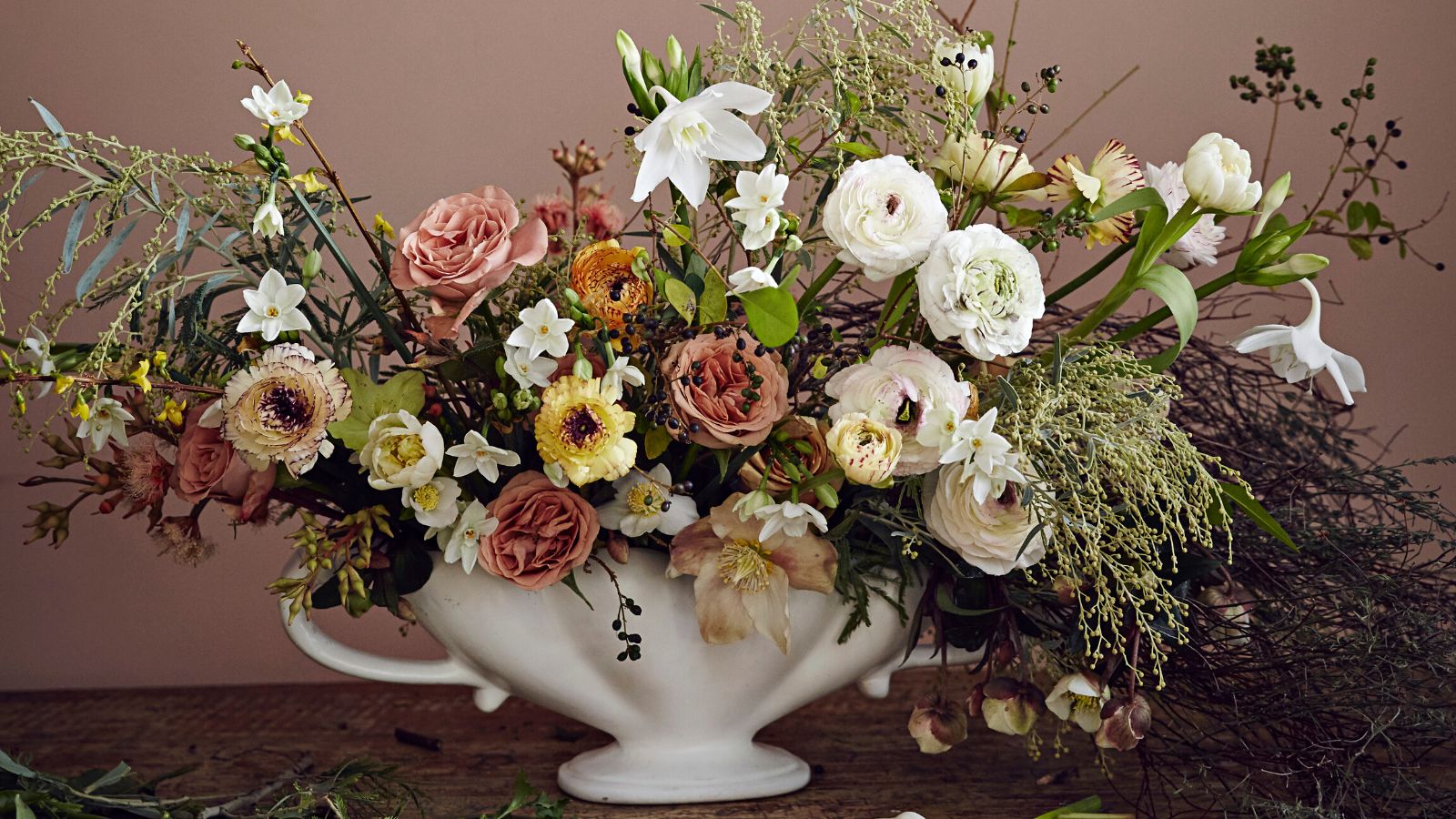
If you have been treated to a beautiful bouquet of flowers, or have even treated yourself, then the next step is arranging them to enhance their intrinsic beauty. But what's the best way to put flowers in a vase?
Getting your head around flower arrangement rules doesn't have to be hard work, explains Larry Walshe, celebrity florist to the likes of Rihanna, Stella McCartney, and Adele. In fact, you only need six simple steps to get it right.
Here is how professionals arrange flowers in a vase for a superb floral display.

Over the years Larry Walshe has been commissioned by Royal Households, hundreds of brides and grooms both home and abroad as well as some of the worlds most discerning brands seeking unique and creative approach to flowers and scenic event design.
How to put flowers in a vase
Putting flowers in a vase is often a lot simpler than many people think. The most important thing to get right is the proportions of your flowers in comparison to the vessel they are in. The rest is all about finding what you like the look of.
1. Keep flowers fresh with a sterilizer
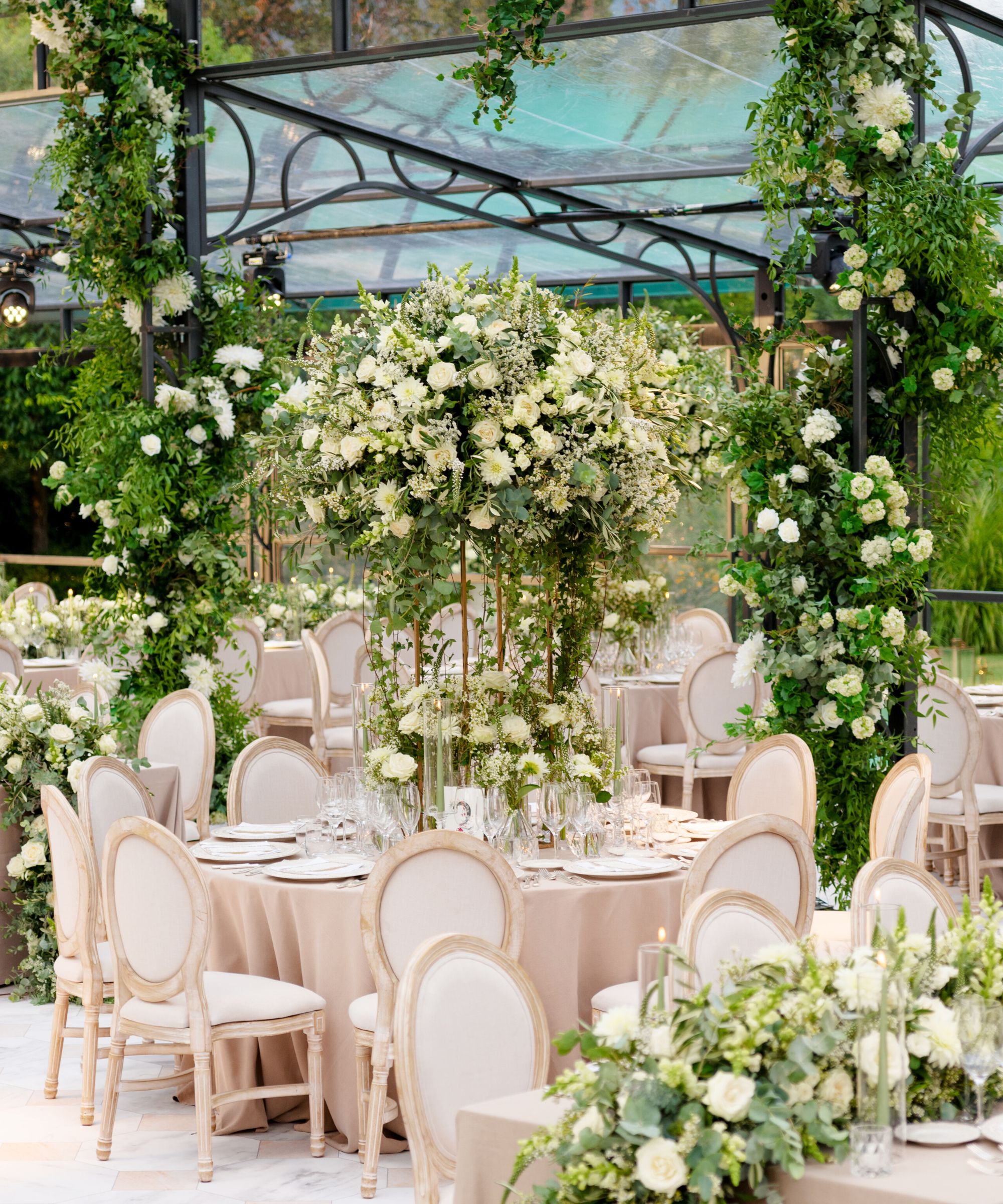
There are plenty of hacks out there for keeping flowers fresh in a vase, but there is one method that is not as well known.
‘This is a total inside secret…the best addition to your vase is a single baby sterilizer tablet!!’ Celebrity Florist Larry Walshe reveals. ‘This sterilizes the water and prevents the growth of bacteria. This in turn ensures your flowers last for the longest time. Just remember to change the water every two to three days, cleaning out the vase and snipping the ends of your blooms each time you do it.’
Sanitizing Tablets | $13.20 at Walmart
A simple sterilizing tablet can help preserve flowers for longer and keep them looking the best
2. As a beginner, use a single flower variety but lots of them
A post shared by Larry Walshe London | Florist (@larrywalshe)
A photo posted by on
‘Our top tip for quick and easy flower arranging is to work with a single flower variety and use lots of it,’ begins Larry Walshe, celebrity florist. ‘A glorious vase bursting with 50 stems of spring tulips cannot help but evoke a smile! Using a single variety of flowers means you can condition each stem the same and no matter how attuned your floral arranging abilities are, you can be sure you will be destined for success.
Design expertise in your inbox – from inspiring decorating ideas and beautiful celebrity homes to practical gardening advice and shopping round-ups.
If you don't have an extensive cut flower garden at home or are working with a smaller bouquet, then using a single flower variety can also help to make your arrangement look more elevated.
‘I believe that decorating using a single variety of flowers can help to make a more cost-effective purchase look more luxurious and elevated,’ Walshe adds. ‘Keeping it simple ensures whatever flower you pick is celebrated in all its beauty. A large bunch of tulips is certainly much more cost-effective than a lavish gift bouquet; however, when seen in glorious abundance, they will look every bit as cheerful and beautiful.’
From here, you can start to add more stems for variety, picking taller stems and flowers for height variety, or picking complementary colored flowers.
3. Choose flowers that complement your decor
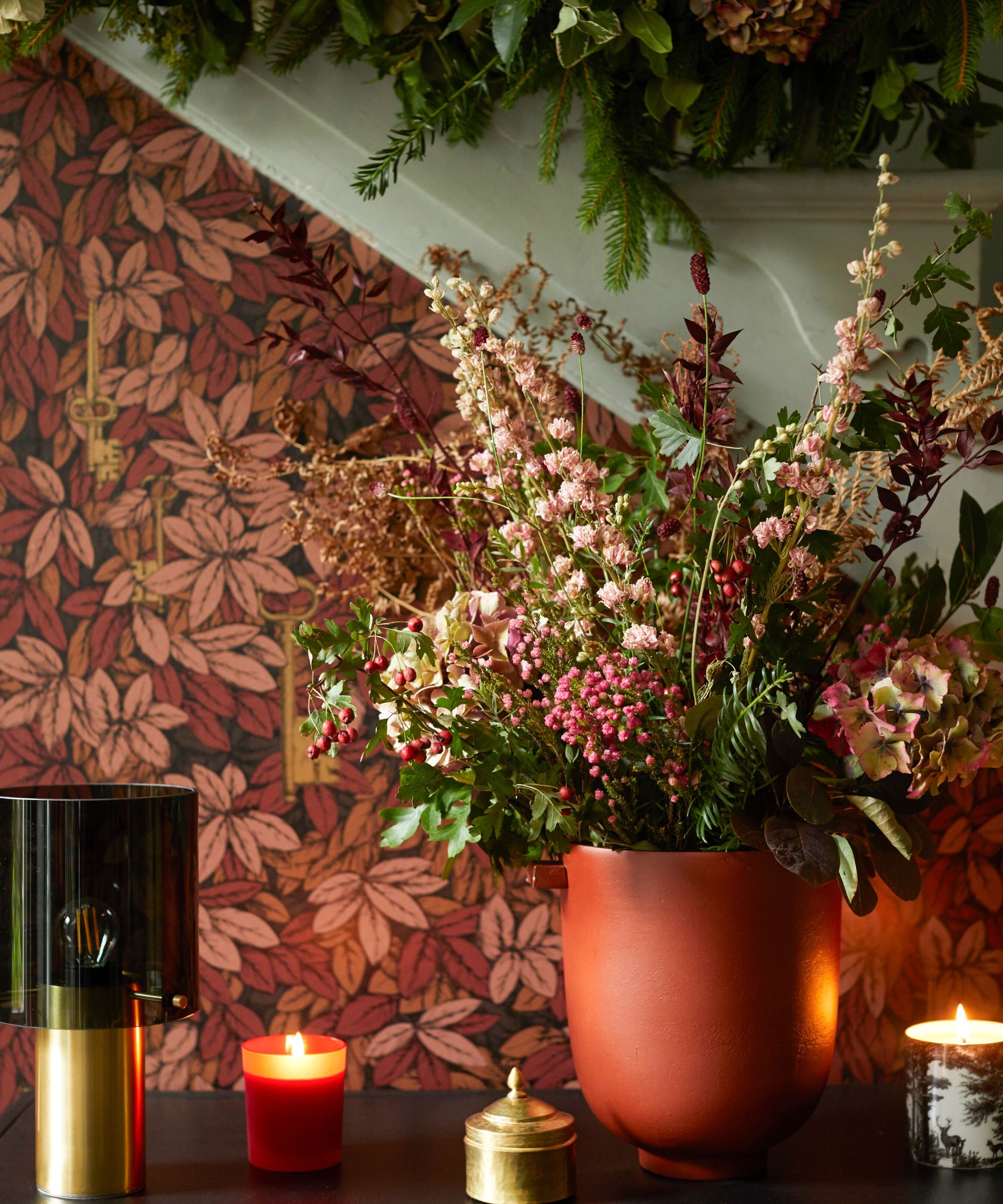
Just like picking out and arranging your home decor, a flower arrangement should add something to your space. Thinking about decorating with flowers in this way is a great way to demystify flower arranging and make it simpler to do yourself.
‘Sometimes, simplicity is best, and celebrating the use of texture and color which will layer perfectly with your other interior textures such as fabrics, flooring, upholstery, and accessories will ensure a style-savvy scheme at home,’ Walshe continues. ‘Working in this way is a little more contemporary than traditional but equally, transforms any space with elegance and ease.’
4. Pick your vase to make a statement

Flowers were never chosen to blend in, so picking a statement vase to put them in is essential to ensuring they remain a statement. When putting flowers in a vase, consider the length of your flower stems. As a rule of thumb, flower stems should be two-and-a-half times the size of the vessel. ‘A lovely tall vase filled with long-reaching stems of amaryllis adds a wonderful statement to any room,’ says Walshe, but a shorter stemmed flower would be better suited to a stouter vase or container.
5. Snip flower stems before arranging
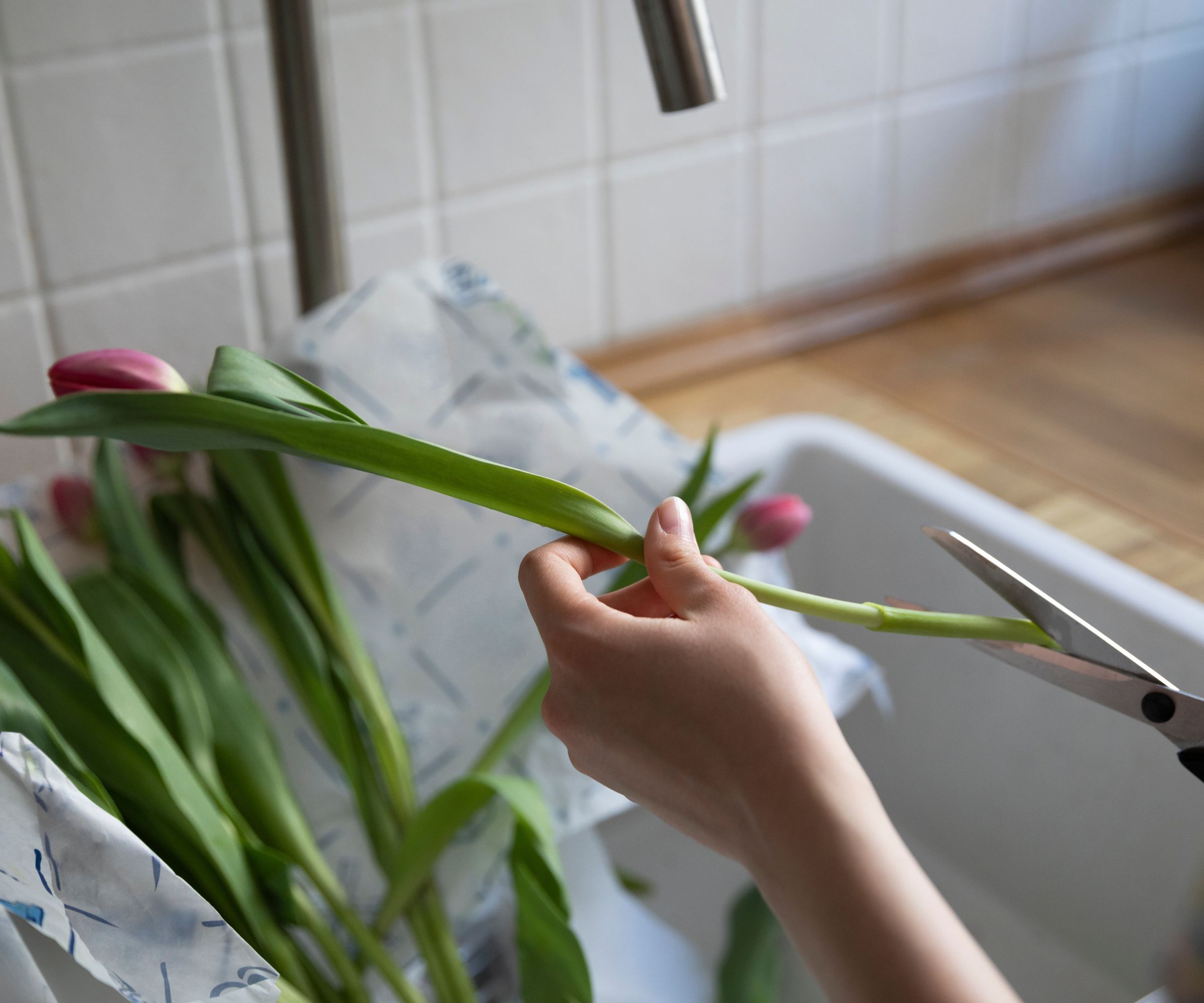
Flower bouquets, especially those bought somewhere other than a specialist florist, should be trimmed before adding to your vase. Using sterilized, sharp scissors, such as pruning shears, can help to cleanly cut stems and prevent tears or disease.
It is also a good idea to cut stems at a 45-degree angle, this increases the surface area of the base of the stem, allowing better water absorption.
6. Place flowers in a crisscross pattern
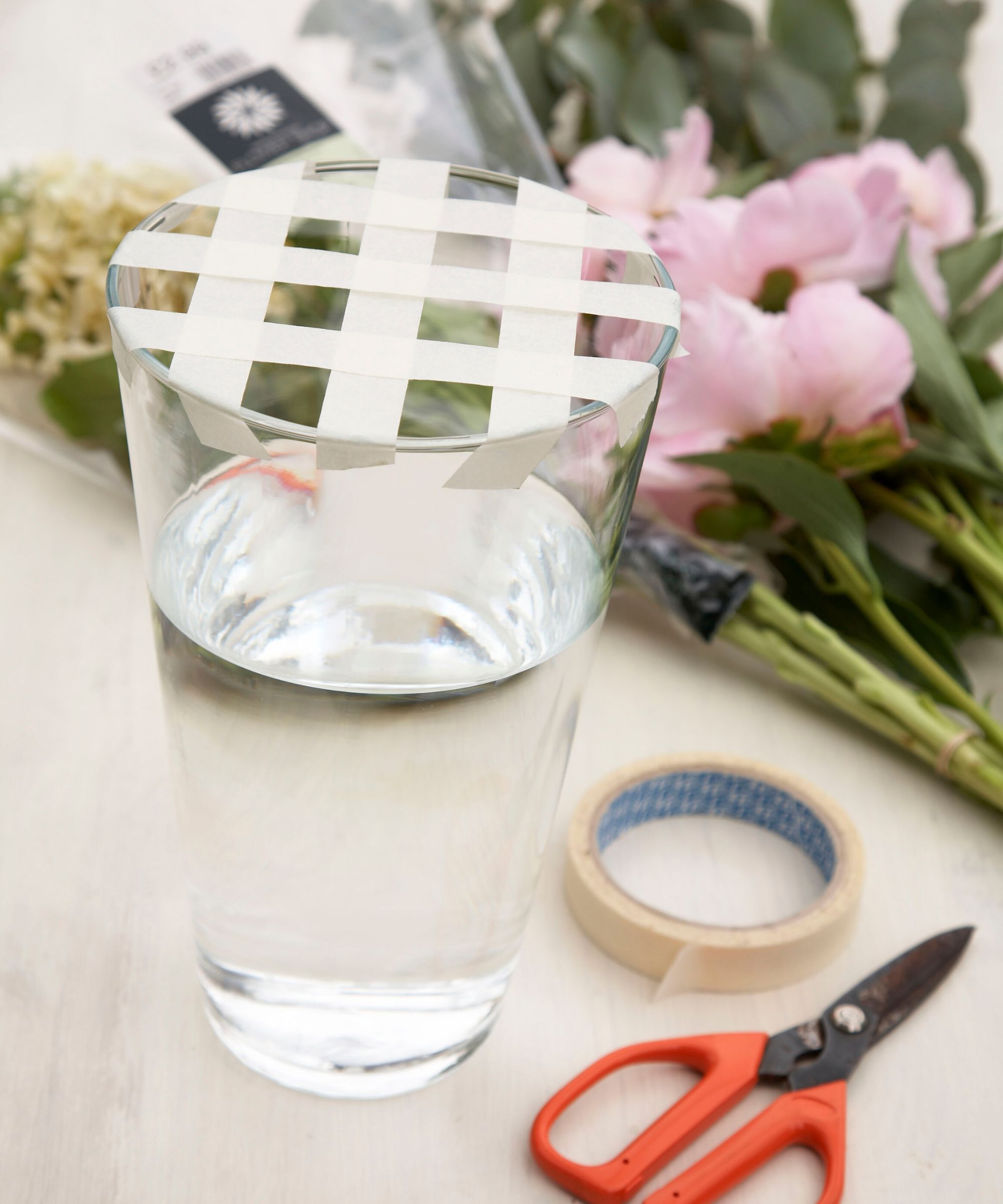
To prevent flowers from moving around in the vase, try placing them in a criss-cross pattern. ‘I love having fresh flowers at home and like to think I'm fairly good at arranging them. I always place the stems in the vase one at a time, at opposite angles. Keep rotating the vase as you go, and the stems should start to create a teepee shape,’ says Millie Hurst, section editor at Homes & Gardens. ‘This obviously takes a little longer than simply cutting the stems and putting them in the vase, but it makes a big difference to the overall look, and guests will notice.’
If you have shorter stemmed flowers, then forming a square grid with tape on the opening of your vase will help to hold them in place and prevent them from falling down into the container. When forming the grid, make sure the gaps are small enough to hold the stems without them falling through. This will, however, make it more difficult to change the water, so it is recommended for shorter-lived flowers, or for a temporary arrangement.

Millie Hurst is Section Editor at Homes & Gardens, overseeing the Solved section, which provides readers with practical advice for their homes. Millie has written about and tried out countless cleaning and DIY hacks in the six years since she became a journalist, and has worked in both London and New York. She is currently completing a diploma in Interior Design with the Interior Design Institute.
FAQs
What are the six principles of floral design?
In floral design, the six key principles of balance, contrast, dominance, proportion, scale, and rhythm help to dictate how to arrange flowers perfectly. This ensures contrast in the arrangement to make the bouquet stand out, without looking small, uninspired, or plain.
What is the golden rule in floral design?
The golden rule in floral design, also known as the golden ratio is ensuring that the flowers or bouquet in the vase are two-and-a-half sizes larger than the container itself. This creates a more balanced visual and prevents your flowers from looking diminutive or subpar.

Chiana has been at Homes & Gardens for two years and is our resident 'queen' of non-toxic living. She spends most of her time producing content for the Solved section of the website, helping readers get the most out of their homes through clever decluttering, cleaning, and tidying tips. She was named one of Fixr's top home improvement journalists in 2024.



